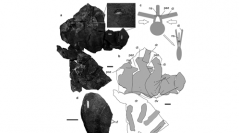

 Comptes Rendus Palevol
17 (3) - Pages 158-165
Comptes Rendus Palevol
17 (3) - Pages 158-165During the Jurassic two main marine pathways might act as dispersion routes for vertebrates and invertebrates between Laurasia and Gondwana: the Caribbean Seaway (between North and South America) and the Trans-Erythraean Seaway (splitting Africa from India, Madagascar). The former has proven to be of relevance as a dispersion route for marine vertebrates and invertebrates between the Tethys and Pacific margin of Gondwana. Nevertheless, little is known about the role of the Trans-Erythraean Seaway as a vertebrate dispersion pathway. The Trans-Erythraean Seaway divides the eastern and western South of Gondwana landmasses in the so-called break-up of Gondwana and connects the Tethys Sea with the Palaeo-Pacific. We describe a newly recovered plesiosaur specimen from the Ameghino (= Nordensköld) Formation, Antarctic Peninsula, the first Jurassic plesiosaur from Antarctica. We discuss the importance of this record regarding the hypothesis of marine vertebrate dispersion through the Trans-Erythraean Seaway.
Plesiosauria, Ameghino Formation, Tithonian, Trans-Erythraean Seaway